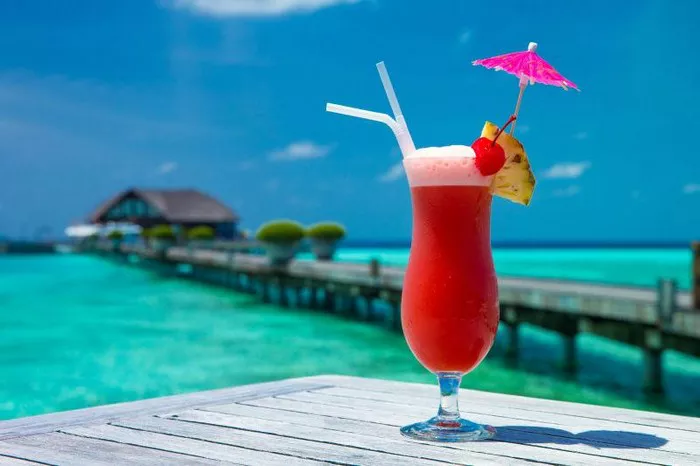The Negroni: a classic cocktail that has stood the test of time. Its bold flavors and simple recipe have made it a favorite among cocktail enthusiasts worldwide. But is a Negroni a strong drink? This question often arises due to its distinctive taste and the potency of its ingredients. Let’s delve into the components of this iconic cocktail to determine whether it deserves its reputation as a strong libation.
The Origins of the Negroni and Its Ingredients
To truly understand whether a Negroni is a strong drink, it’s essential to explore its origins and the ingredients that compose it. The Negroni traces its roots back to early 20th century Italy, where it is believed to have been invented by Count Camillo Negroni. This cocktail is traditionally made with equal parts gin, Campari, and sweet vermouth, resulting in a balanced yet potent concoction.
Gin, the primary spirit in a Negroni, is known for its relatively high alcohol content. Typically distilled from grain or malt and flavored with botanicals such as juniper berries, gin adds a strong backbone to this cocktail. Its distinctive flavor profile, ranging from floral and citrusy to herbal and spicy, contributes to the complexity of the Negroni.
Campari, a key ingredient in the Negroni, is a bitter Italian aperitif renowned for its vibrant red hue and bold flavor. Made from a secret blend of herbs and spices, Campari imparts a bitter yet refreshing taste to the cocktail. Despite its bitterness, Campari carries a significant alcohol content, further adding to the strength of the Negroni.
Sweet vermouth, the final component of the Negroni trinity, provides balance and depth to the cocktail. This fortified wine infused with botanicals and sweetened with caramelized sugar complements the gin and Campari, softening their assertive flavors. However, sweet vermouth also contains alcohol, contributing to the overall potency of the drink.
Analyzing the Alcohol Content
When assessing whether a Negroni is a strong drink, it’s crucial to consider the alcohol content of its individual components and how they combine in the final cocktail. Gin typically has an alcohol by volume (ABV) ranging from 40% to 50%, depending on the brand and distillation process. Campari, while slightly lower in ABV, still packs a punch with an alcohol content of around 20-28%. Sweet vermouth has a lower ABV compared to gin and Campari, usually ranging from 14% to 18%.
When mixed in equal parts as in a classic Negroni recipe, the alcohol content of each ingredient combines to create a potent cocktail. With gin and Campari as the dominant spirits, a Negroni can have an ABV of approximately 24-28%, making it comparable in strength to many straight spirits. This high alcohol content contributes to the robust character of the Negroni and its reputation as a strong drink.
The Impact of Dilution and Serving Size
While the Negroni undeniably contains a significant amount of alcohol, factors such as dilution and serving size can influence its perceived strength. Like many cocktails, the Negroni is typically served over ice, which gradually dilutes the drink as it melts. This dilution can mellow the intensity of the alcohol, making the cocktail more approachable for some drinkers.
Furthermore, the size of the serving glass and the ratio of ingredients can affect the overall potency of a Negroni. While the classic recipe calls for equal parts of gin, Campari, and sweet vermouth, variations abound, with some bartenders adjusting the proportions to suit personal preferences or highlight specific flavors. A smaller serving size or a variation with less gin may result in a slightly less potent Negroni.
However, even with these considerations, the Negroni remains a strong drink by most standards. Its distinctive blend of spirits ensures that it packs a flavorful punch with each sip, making it a favorite among those who enjoy bold cocktails.
The Cultural Significance of the Negroni
Beyond its alcohol content, the Negroni holds significant cultural importance as a beloved cocktail with a storied history. Its enduring popularity has led to numerous variations and interpretations, from barrel-aged renditions to innovative twists featuring exotic ingredients. The Negroni has also inspired events such as Negroni Week, where bars and restaurants worldwide celebrate the cocktail while raising money for charitable causes.
Moreover, the Negroni serves as a symbol of sophistication and refined taste, often associated with cocktail culture and the art of mixology. Its timeless appeal transcends generations, appealing to both seasoned cocktail enthusiasts and those new to the world of mixed drinks. Whether enjoyed at a trendy cocktail bar or mixed at home, the Negroni continues to captivate drinkers with its allure and complexity.
Moderation and Responsible Drinking
While the Negroni’s strength may add to its appeal for some, it’s essential to consume alcoholic beverages responsibly. As with any cocktail, moderation is key to enjoying the Negroni safely and responsibly. Its high alcohol content means that excessive consumption can lead to intoxication more quickly than lower-proof drinks.
Furthermore, individuals should be mindful of their tolerance levels and avoid driving or engaging in activities that require full cognitive function after consuming alcoholic beverages. Alternating between water and alcoholic drinks, pacing oneself, and knowing one’s limits are crucial practices for responsible drinking.
In Conclusion
The Negroni is undeniably a strong drink, both in terms of its alcohol content and cultural significance. Comprising gin, Campari, and sweet vermouth, this classic cocktail delivers a bold and flavorful experience beloved by cocktail enthusiasts worldwide. While its potency may vary depending on factors such as dilution and serving size, the Negroni remains a quintessential libation for those who appreciate the art of mixology and the pleasures of a well-crafted cocktail. As with all alcoholic beverages, moderation and responsible consumption are paramount when enjoying this iconic drink.


